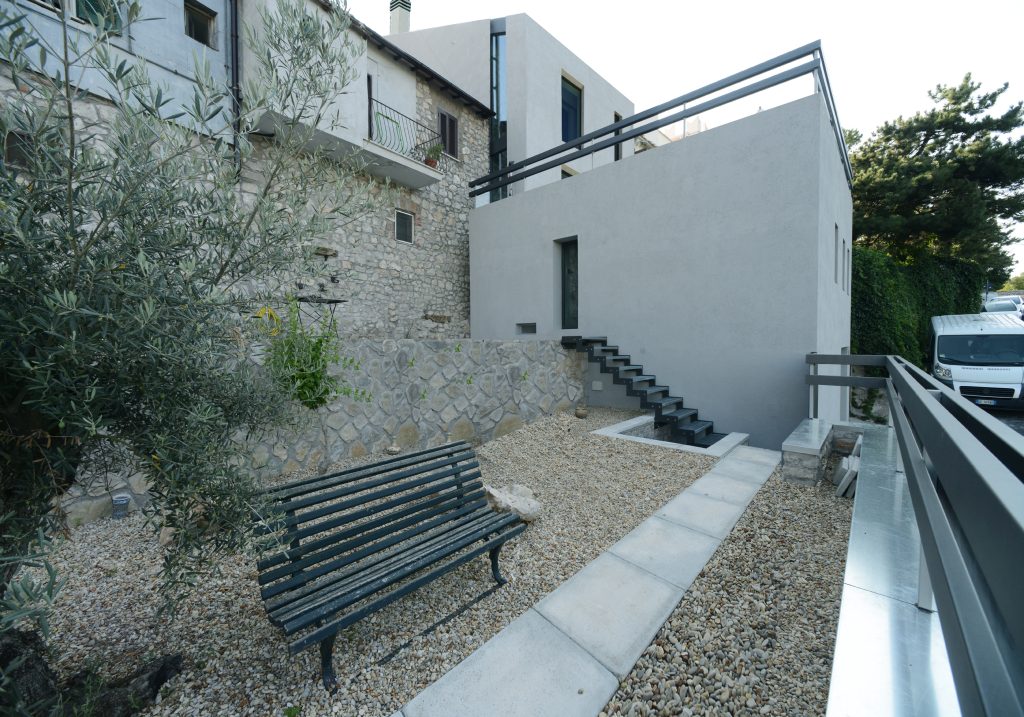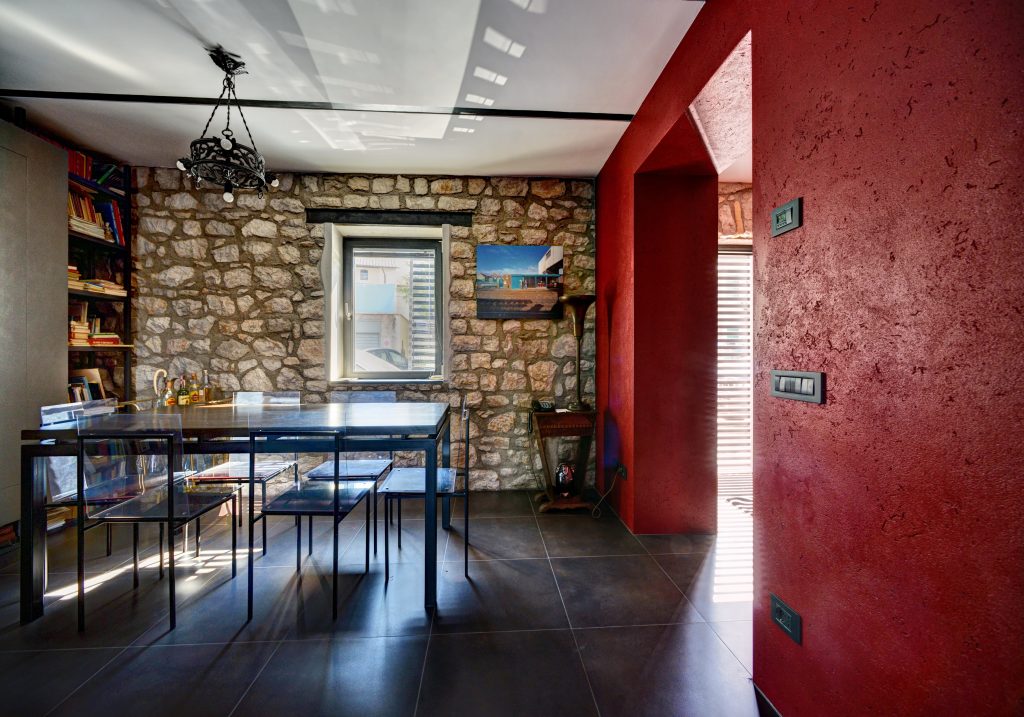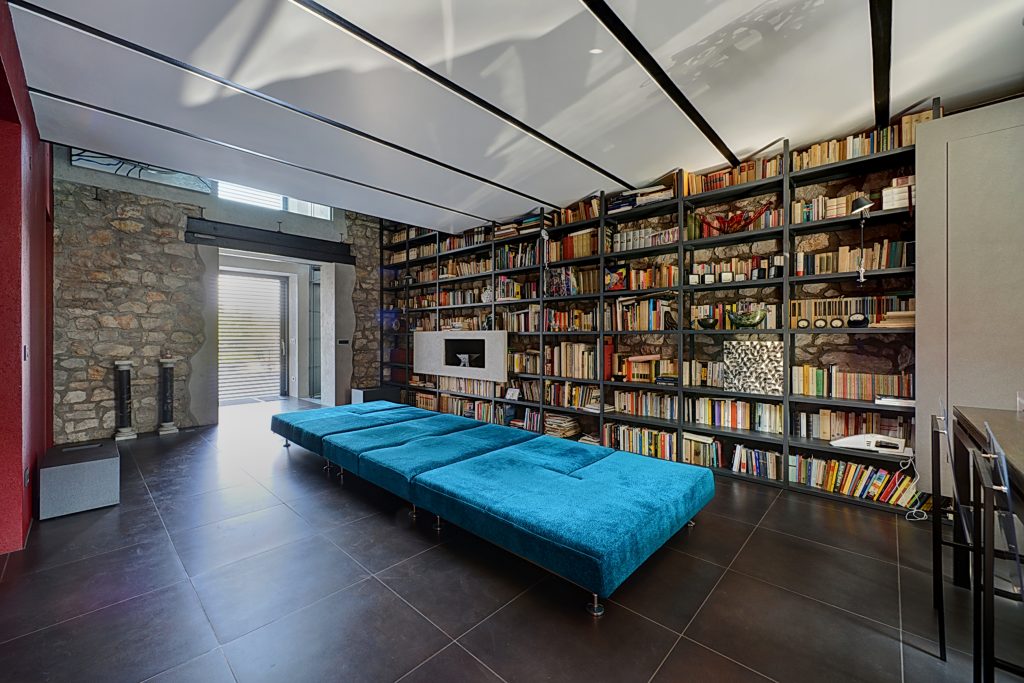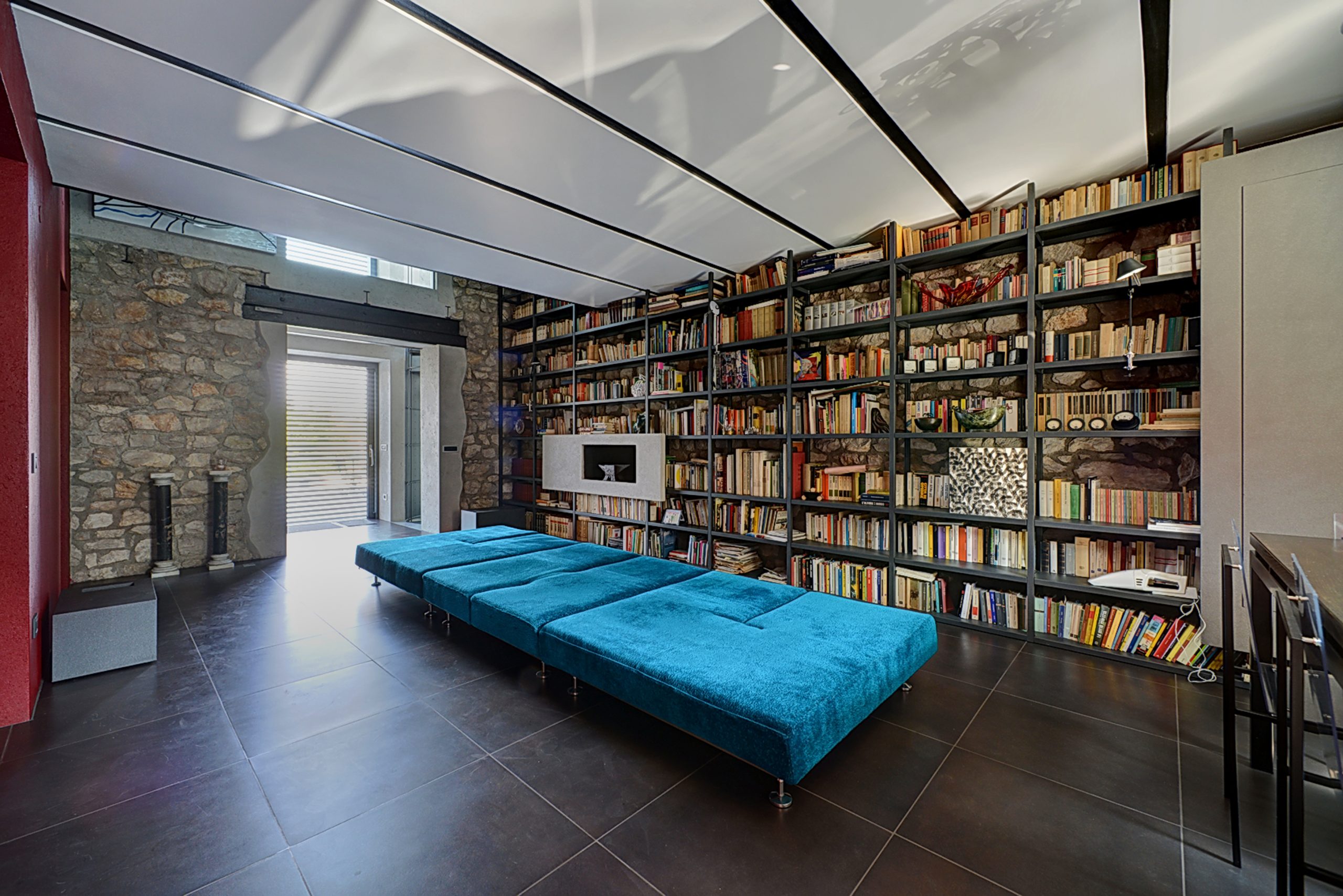The project began with a close investigation into the architectural features of the place. The house is located at a height of 800 metres to the east of Rome, in the ancient acropolis of Praeneste (today’s Palestrina) 70 km from Rome. Today, Castel San Pietro Romano, the place where Comencini’s “Pane amore e fantasia” [Bread Love and Dreams] was filmed in 1953, is a tiny, compact village with very narrow streets and roughly plastered houses. The old town walls, which wrap around it from the fortress dating back to the year 1000, highlight a series of superfetations built in the 50s, which jut out on the main road. The house represents one of these and is set out on five levels. Its height gives a wonderful 360 degree view of the surroundings. Previously, the old town wall was hidden inside the house between the first superfetation and the original nucleus, dating back to the early twentieth century, which caused the total visual loss of the historic remains. The first step was to divide the series of superfetations and the old house in order to read the sequence of interventions made over the years. A decisive link




between old and new is now guaranteed by the presence of a 10m-high and 90 cm-wide, glass window, which enables the walls of the old town to be viewed once again. The old, completely plastered house now has exposed, internal stone work, whereas outside the original plaster has been restored. The annexe (the volume of superfetation), connected to the rest of the house only
via a spiral staircase, has been restored and plastered, leaving only the part coinciding with the historic wall in stone. Minimal intervention divided both volumes on the inside with glass or coloured walls to allow all the materials and constructive technologies used to be seen. Conceived
as intersecting, horizontal and vertical levels in order to create an ever-changing, spatial conception, the walls are divided into three levels inside the original nucleus, with a living room, kitchen and bathroom on the ground floor, whereas the two upper floors have a bedroom, a living room, a study and their respective utility rooms. Everything within the original nucleus is visible, even the
roof. A large, iron bookcase can be seen entirely, as it rises up all the levels as far as the metal sheet and girders of the roof. The annexe is also divided by glass walls to give a hydro-massage relaxation area with a changing room, a bedroom, a study and their respective utility rooms





